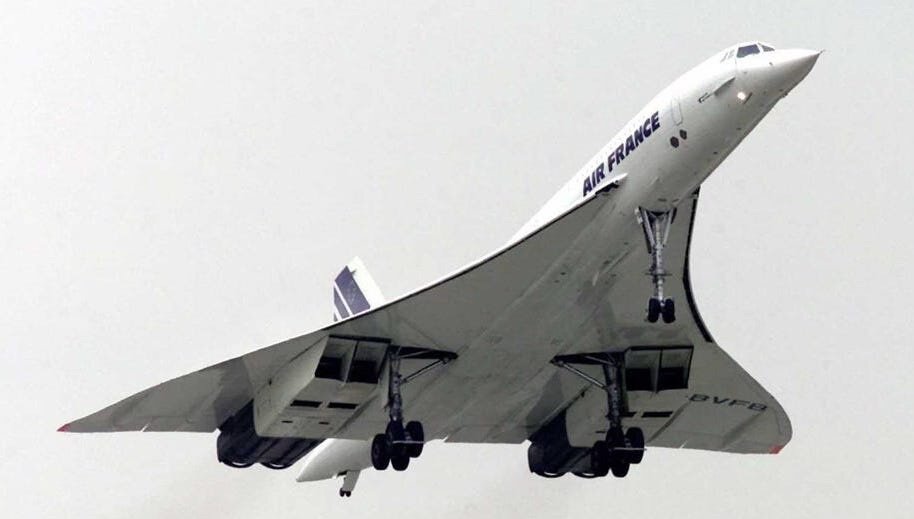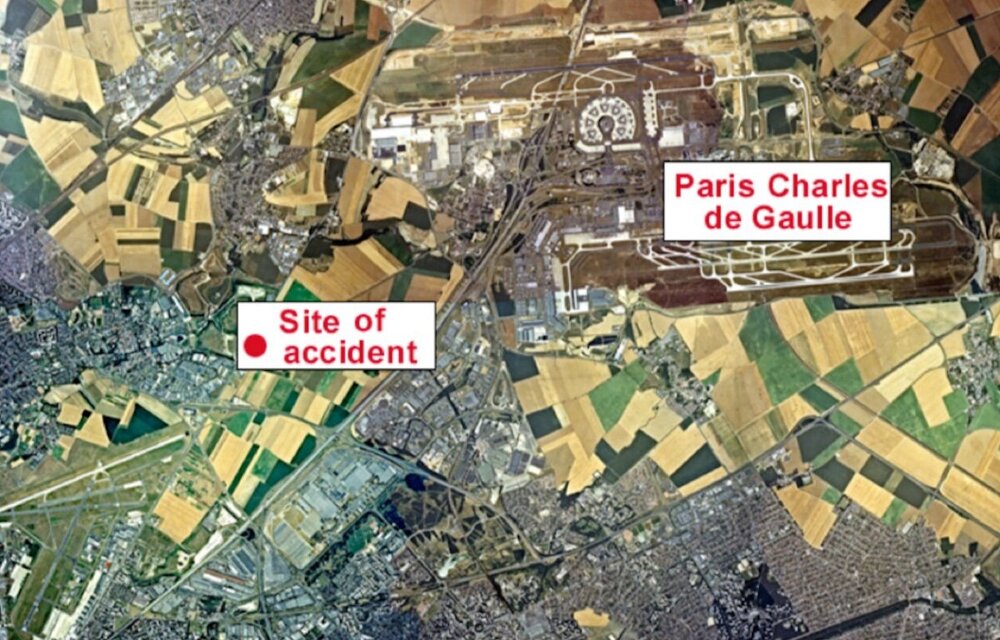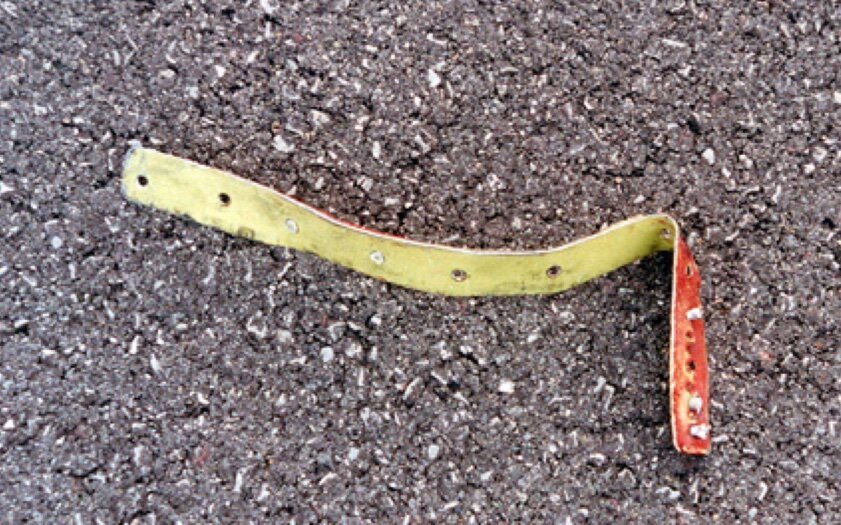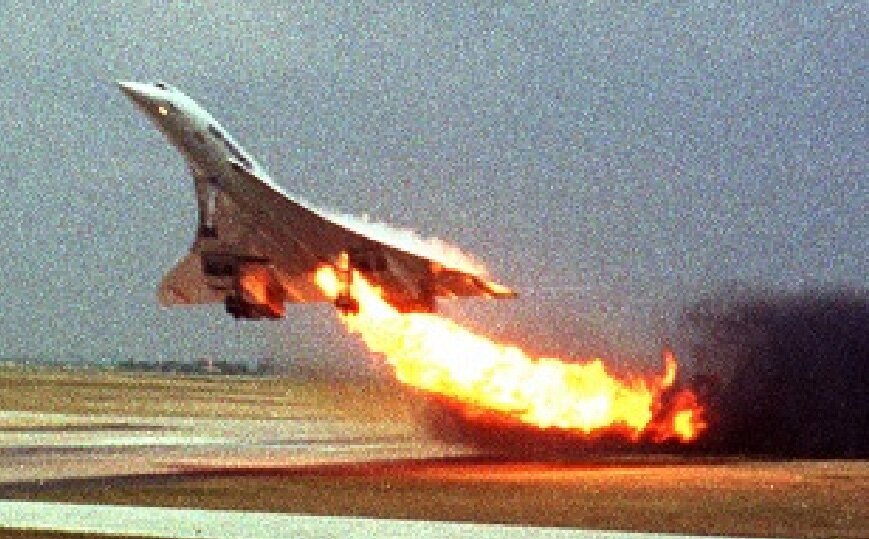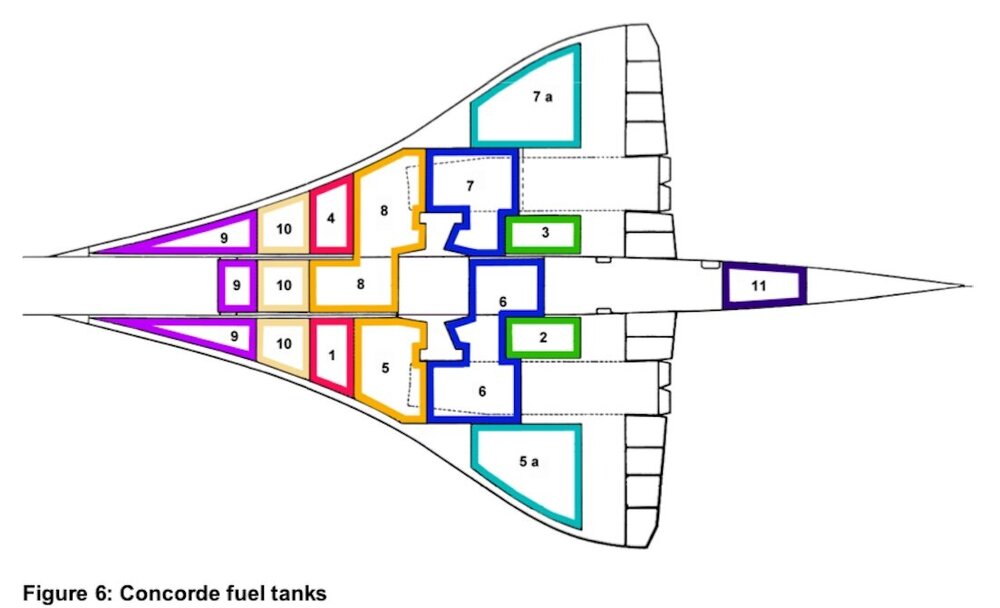Leaderboard
Popular Content
Showing content with the highest reputation on 07/23/2021 in all areas
-
Sunday marks the 21st anniversary of the horrific crash of an Air France supersonic Concorde just after take-off from Paris Charles de Gaulle airport. Not only were all 109 people on the aircraft killed, four employees of the hotel close to the airport also died. Arguably the most important result of the accident was that it created doubt about the integrity of the aircraft and its future. After all, Concorde had entered commercial service 25 years earlier, used 1950s and 60s technology, had a limited range mostly to the east coast of the United States and required an immense amount of increasingly expensive fuel. I have had a strange fascination with aircraft crashes ever since a Turkish Air DC10 crashed outside Paris in early 1974. I had known someone on that flight. She had been booked on a British European Airways flight to London that was cancelled due to a strike. Since the Turkish plane was usually pretty empty for its last sector, most of the BEA passengers were transferred on to the DC10. The aft cargo door had been badly designed and then badly closed by a ground handler in Paris. As the aircraft pressurised, the door was blown open, the floor of the passenger cabin collapsed and severed hydraulic lines. It crashed into a wood with the loss of 346 lives. Thereafter there was the dreadful series of errors that led to the collision of two 747s at Tenerife, the loss of a DC10 just after take-off at O’Hare when the left engine flew off, the Japan Airlines 747 which crashed into the woods following the aft bulkhead being blown out and taking the tail with it – the result of faulty maintenance 7 years earlier. But the crash the whole world remembers is surely that of the Air France Concorde. Although I only had one Concorde flight, I loved the entire experience. That and the AF crash have remained in my mind, the more so when I believe, as others appear to do, that the official French Accident Report contained major flaws, intent on ensuring as little blame as possible fell on then government-owned AF. Within minutes the crash became the subject of intense speculation. Even today, there remain several important unanswered questions. But let me start with a brief description of events. I apologise for the length but it is really not possible to explain even some of what happened without going into considerable detail. Background AF4590 had been chartered by a German tour company. The mostly German passengers would first fly to Paris where they would transfer to the Concorde lounge prior to a flight to New York. Once there they would be taken in coaches to a cruise terminal where they were to join a long cruise to the Caribbean and beyond starting that evening. The incoming flight from Dusseldorf was about 30 minutes late. Although this was not in itself an issue, any further major delay might create a problem in New York where their cruise liner had a specific departure time. But a last-minute technical fault was discovered on Concorde which had to be fixed. That resulted in yet another 30 – 40 minute delay. After the luggage and the passengers were on board, the aircraft taxied to the take-off runway. The captain started the take-off roll at 4:42pm local time. At some point roughly two thirds down the runway, air traffic control noticed heavy flames coming from the left side of the aircraft close to the No. 1 and No. 2 engines. Immediately the controller alerted the flight crew. They were then faced with two possibilities. The first was to abort take-off. But since the aircraft had already passed V1 - the point at which there would be no more runway left for a safe abort – the captain had no choice but to get the aircraft into the air. As was discovered by the official BEA Report, had take-off been aborted, it would have crashed through the end of the runway at approx. 78 knots. Given the fire at the back of the plane and all its 17 fuel tanks brimming with fuel, the resultant fireball would have killed everyone. The second was to get into the air and then find a way of getting back to a runway with emergency services as quickly as possible. As footage taken from the cabin of a truck passing near the airport shows, the Concorde never climbed higher than 60 meters. The pilots discussed going around to land back at Charles de Gaulle. ”No time” said the captain. They decided to try and land at the nearby Le Bourget airport. Within seconds, the same “no time” was repeated. Seconds later the aircraft became unflyable, pitched up and banked heavily to the left. It crashed into a nearby hotel. Photo:BEA/IGN/Fleximage The Official French Accident Report According to the January 2002 Report by the French Accident Investigation Bureau (BEA), the crash had a single cause. Concorde ran over a narrow strip of metal as it was about half way down the runway. This shredded the first inner tyre of the left-side undercarriage (each side had four wheels – two in front and two behind). A section of rubber was hurled at massive speed towards one of the 17 fuel tanks mounted in Concorde’s wings. These had been fuelled to the brim on the captain’s orders instead of, as was normal practice, leaving some air in each tank. The rubber did not puncture tank No. 5, but it set off a hydrodynamic surge inside that resulted in a shockwave and extreme pressure on the walls of the tank. With no air to absorb the shock, very quickly the fuel ruptured the tank outwards at its weakest point. The fuel quickly ignited. Concorde Fuel Tank Layout: BEA Report As a result, Engine No. 2 suffered an engine surge which reduced its efficiency. Around the same time, a similar surge resulted in a loss of efficiency in Engine No. 1. This required the captain to compensate for a leftwards droop. However, both engines quickly recovered, only for No. 2 to suffer a second surge during take off. Engines 3 and 4 operated normally. At the same time, the crew was unable to reduce drag when they could not retract the landing gear. Thus the aircraft suffered from insufficient power and a leftward yaw. The Metal Strip After investigating flights which had taken off prior to the Concorde, it was discovered that the strip came from a part of the engine cowling of a DC10 belonging to Continental Airlines. This had been replaced during a regular service in Houston on 9 July. But the mechanic had not replaced it with the part as specified in the maintenance manual. This required a steel strip to be affixed by a series of screws. Instead, the mechanic used a strip made mostly of titanium. Since the screw holes did not match, he drilled new holes. To further ensure the integrity of the new part, he glued it with a red glue prior to inserting the screws. It was this red glue on the strip found on the Paris runway that identified it as having come from the Continental flight. Over the next two weeks, the strip began to come loose, finally dropping off as the DC10 took-off from Paris. Alternative Theories I recall seeing a television documentary maybe two years or so after the crash which brought out a series of other causes which are either not included in the BEA Report or are dismissed as not material. I cannot find that particular video. But most of its conclusions were included in an investigation by The Observer newspaper and reported on 13 May 2001. It is important to realise that this news Report takes into account the views of seven Concorde pilots, six from BA and 1 from Air France, and one AF engineer, all with vast experience in flying the plane. One, John Hutchinson, had been piloting Concorde for 15 years. Their views are therefore more than important in trying to find the reasons for the crash. (I call this group the Expert Panel - EP). Delay in Departure Because the incoming flight from Dusseldorf had been delayed and the technical problem on the Concorde then had to be fixed, it was around 90 minutes behind schedule. Had it taken off even 10 minutes earlier, that Continental DC10 would likely still be at its gate and there would be no metal strip on the runway. Weight of the Aircraft The Observer EP agreed – as does the BEA Report – that the Concorde was overweight. 19 bags of luggage weighing 500 kgs had been added at the last minute and were not on the manifest that had been given to the cockpit crew. Although the baggage crew did not wish to load them, the captain ordered them to do so. With no room in the forward hold, they were crammed into the back hold. Earlier the captain had asked for extra fuel to be added beyond the usual limit for New York flights. Thus, this Concorde ended up six tonnes overweight. Flying just a tonne over maximum structural weight was theoretically illegal. With the addition of so much weight at the back, the plane’s centre of gravity had shifted “dangerously” towards the rear. The captain was pushing to the extreme the limits of safe flying as identified by the aircraft’s test pilots prior to the aircraft entering passenger service. Weather Between the time of their flight briefing and positioning the aircraft at the end of the runway, there had been a change from virtually no wind to an eight-knot wind. Instead of facing this wind, the captain had the wind behind him. That was a crucial error and as Hutchinson says ”an incredible revelation”. The captain now needed even more runway before he could get his aircraft into the air. Many Concorde pilots had found themselves in a similar situation. On those occasions they had insisted on taxiing back to take off from the other end of the runway to be against the wind. “They were already at the limits of the envelope. Once the wind changed, they were beyond it,” says Hutchinson Runway Inspection It was protocol at CFG airport for there always to be a full runway inspection prior to every Concorde departure. This was important because unlike conventional aircraft whose wing flaps and leading edge slats help to progressively reduce the weight of an aircraft as it speeds down the runway and the wings start to do their work, Concorde’s delta-shaped wings resulted in its extremely heavy weight remaining a constant until actually airborne. The stresses on its landing gear were therefore unusually severe. It was vital that any runway debris be cleared. Yet prior to the Concorde take-off roll on this afternoon, there had been no runway inspection. The Air France 747 As Concorde started its take-off roll, there was an AF Boeing 747 which had just arrived from Tokyo waiting on a taxi-way to the left of the runway and about three quarters of the way down. One of the passengers was the President of France returning from a G7 meeting. The pilots of the Concorde would have been well aware of this VVIP passenger. Also on that flight was a Japanese tourist who happened to have purchased an instant camera from a vending machine at the airport in Tokyo. The 747 captain had advised his passengers that a Concorde was about to take off. The Japanese had his camera at the ready. He had no idea his photo of Concorde taking off with a ball of fire behind it, would find its way on to the cover of many magazines around the world. Although lacking clarity, this photo shows that the source of the fire is not an engine but is located somewhere closer to the centre of the doomed aircraft. Concorde was veering to the left and getting close to the grass at the side of the runway. The co-pilot is then heard shouting, “Watch out!” No explanation has ever been put forward for this exclamation. The EP team believes it was to remind the captain that on its present track Concorde would come dangerously close to that 747. Also, if even one of its wheels was to hit the grass, the undercarriage would have been ripped off, Concorde would have flipped over and almost certainly ended up engulfing both planes in a fireball. In fact, the Concorde was even closer to the 747 than anyone believed. As it took off way left, the 747 captain would later say it soared above his stationary plane by less than 30 feet. It should have been nowhere near the 747. Another issue raised by the pilot of that 747 was his claim that there was smoke coming from the back of the Concorde before it reached the metal strip. This could have been a result of the wheels on the left undercarriage rubbing against each other. The Landing Gear Spacer Both BA and AF had very strict regulations for their ground crews when any work on the Concorde was required. One regular maintenance requirement was the time when various load-bearing components would have to be replaced. Given the stresses on the undercarriage, the “spacers” were one such component. These keep the two sets of tyres on each side of the landing gear in place to ensure there is always a fixed space between them. They are only 5 inches in diameter and 12 inches long. When this Concorde had had certain parts replaced a week prior to the accident, the mechanics had failed to replace the spacer in the left undercarriage. The aircraft then flew twice to and from New York. Each time it took off and the landing gear retracted, without the spacer two of the left wheels got closer to the other two. By 25 July there had been movement of about seven inches. As a result the ten wheels in the full undercarriage were out of alignment. The spacer was later discovered in the Air France Concorde workshop. As those on the EP claim, when Concorde started its take off roll it would have felt a little like a supermarket trolley with a slightly wobbly wheel. They further claim that the acceleration of the Concorde was slower than normal from the start as though something was holding the aircraft back. They suggest this was a result of friction from the undercarriage. Without that friction, they believe the plane should have taken off 1,694 meters from the start of the runway – before it had reached the metal strip. Take Off With the undercarriage out of alignment, it was inevitable that Concorde would veer to the left. The captain could only correct this to a certain extent by using the rudder. The EP believe that as this was happening, it hit a landing light. It adds this was rather like trying to take off in an exceptionally heavy cross-wind, a situation all Concorde pilots were trained to avoid at all costs. Should the captain have aborted take-off before reaching V1 to have this leftward movement checked? Almost certainly, yes. But he would have been aware of the resultant long delay and the relatively tight deadline for the passengers on arriving in New York. Might this have persuaded him that an abort was out of the question? We do not and cannot know. The BEA Report rejects this theory, suggesting instead that the leftward movement was a result of the failure of the engine, even though it accepts that the wheels were out of alignment. The EP then suggests that with the aircraft beyond V1 and veering very close to the grass on the left, the captain had no choice but to take off, even though he will have known he was well below the required 220-knot airspeed. Good Engine Shut Down after Take-off Having been told about the fire and as the aircraft had just left the ground, the two right engines were working as normal, the left side No. 2 was occasionally surging and the No. 1 also subject to surging. The flight engineer then inexplicably shut down the No. 2 engine. All experts agree this was a “disastrous mistake”. Only the captain can order an engine shut down. The engine was not on fire and standard engine fire procedures further mandated no engine should be shut down below 400 feet. As John Hutchinson says, “Discipline had broken down. The captain doesn’t know what’s happening; the co-pilot doesn’t know; it's a shambles. Once you deviate from procedures, it’s chaos.” Law Suits While acknowledging some of the above, the Final BEA Report all but dismissed them and placed the entire blame on Continental Airlines. This was perhaps inevitable. Air France and its insurers were facing a huge compensation bill. It had already offered each victim US$1 million. If their lawyers were to proceed with an action in New York, as was their right, this would be peanuts. Air France was initially successful in 2010 when a French Court ruled that Continental had been wholly responsible for manslaughter in respect of the crash. Continental was ordered to pay 70% of the damages to victims. But two years later a French Appeals Court overruled that judgement. Instead it ordered Continental to make a payment of around one million Euros to AF as civil damages. Conclusion John Hutchison believes the fire on its own should have been “eminently survivable: the pilot should have been able to fly himself out of trouble” as the fuel from that one tank would eventually have burned itself out. But the captain had broken rules one more time by giving an instruction to the engineer prior to take off to open Tank 11 by the tail so that it fed into Tank 5. This would ensure a constant supply of fuel to Tank 5 and help move the centre of gravity forward. But the effect was to make it impossible for him to fly himself out of trouble. Hutchinson believes the crash that resulted was a lethal combination of operational errors mostly by the cockpit crew and ‘negligence’ by the maintenance department of AF. 'Discipline had broken down, “says Hutchinson. Chillingly, he adds, “Most of the contributing factors were avoidable.” Sources https://www.theguardian.com/world/2001/may/13/davidrose.focus BEA Accident Report - https://www.bea.aero/uploads/tx_elydbrapports/f-sc000725a.pdf Later TV Documentary by Captain Hutchinson About 15 years or so after the EP Report, this video was made of John Hutchinson in the captain’s seat of a Concorde. He explains in greater detail and with additional information, particularly about the Concorde being overweight, the distribution of the weight and the state of the runway. It is very clear from what he says that the AF captain, AF ground crew and AF maintenance were very much the primary causes of the accident.5 points
-
Also are we assuming that "gays" have such a limited interest span that we can't be interested or follow topics that don't involve overly "gay' subjects - surely if sitting chatting in a (gay) bar over a beer with a fellow "gay" it would sometimes be perfectly acceptable to chat and discuss the weather, or covid, or some new pension / visa rules that just came out, or some smart piece of investment advice we'd just picked up or the host of other topics that crop up here and on other "gay" boards occasionally too. Whilst I'm all for the "Wow what a lovely big Asian cock he has" post I do also welcome the other stuff as well as life ( for most of us at least) doesn't just revolve around the big cock topics but also includes those other subjects too, even if they aren't exclusively, exceptionally or overtly "gay" perhaps.4 points
-
Just for the record and to appease any other members who may be wondering why this post is here - can you please clarify were there any "Gays" on the flight( apart from the cabin crew of course)- just so it makes the subject a little more relevant to the Board perhaps !? :-)2 points
-
How is Mexico controling the outbreak?
Ruthrieston reacted to floridarob for a topic
Keep in mind that the idiot president is a populist, like Trump, Bolsonaro, Boris Johnson, etc....1 point -
Given the global extent of the pandemic and the spread of the Delta variant I wonder how easy it will be to get insurance for covid19. Those holding annual medical policies with worldwide or near worldwide cover may already find they are covered. I checked and my plan does cover the pandemic. Renewals of annual travel policies may also provide cover, although the one I used to have for several years had a pandemic exclusion clause. I wonder how many new policies will actually include cover and what the deductible will be in a pandemic. Merely curious.1 point
-
1 point
-
I would like to visit Columbia, after COVID.1 point
-
Returning to USA from Brazil
Lucky reacted to floridarob for a topic
The drugstore I mentioned gives the results and form to you while you wait. Wouldn't it suck to wait until you get to the airport to find out that you're positive and can't fly? Plus, Haven't you gone to the Tomcal school of taking your luggage to the sauna on your last night and leaving from there to the airport1 point -
The catalyst that is changing everything
splinter1949 reacted to reader for a topic
Although what was to become known as the Delta variant was only detected late last year in India, it has raced to the top of all the other variations of COVID competing for transmissibility. Countries that saw a possible exit from the scourge have fallen back into its ever more powerful grip. Among them are just about all of Southeast Asia. We've pretty much exhausted the blame game. We know what wasn't done and who didn't do it. This knowledge may help prevent leaders from repeating past mistakes but there is only one thing that will prevent further catastrophe: attaining a rate of inoculations that outdistances the rate of new infections. Lockdowns are temporary holding actions. The pause buys time by hopefully slowing the rate of new cases. But there's a limit to their duration. You can only keep people confined to their homes--and in most cases, away from the source of their income--for so long. If the government can't take full advantage of that time span, nations could begin to fail in ways not seen before by most current inhabitants. Readers here are understandably concerned with when they're going to be able to return to a Thailand that looks something like the one they left in 2019. But for most of the Thais in Bangkok and Pattaya, they're now facing the reality that their future--if not their very lives--are at stake. The Delta variant is mocking man's ability to rule nature. It's exposing the fallibility of class, wealth, pride and prejudice. For the next few weeks, some of us will have our attention diverted by an event that normally occurs once every four years (but in this case, five): the Summer Olympics. We can only hope that when the events wind down so, too, will the Delta variant rampage begin to slow. If we're lucky, the number of new cases will begin to show a steady decline, followed by a lessening of the daily death count. If these signs don't materialize, our vacation plans could well become the least of our concerns. ========================================= From Thai Enquirer New political awakening coming too late? Prayut’s announcement on June 16 that he would reopen the country within 120 days was subjected to much ridicule and skepticism. Not only was the target highly unrealistic, with rising infection numbers and the country unable to secure the 120 million doses of vaccines it needs for her immunity, it also became the strongest piece of evidence that the government was out of touch in combating the pandemic and economic crisis. As covid-19 cases continue to surge after Delta variant was first discovered at Lak Si construction site, Thailand’s livelihood and economic well-being has taken a nose dive with no apparent hope in sight. Therefore, it is unsurprising that more and more people are publicly voicing their discontent, including celebrities and television personalities that tend to be politically-shy. It is a watershed moment for Thai politics as an overwhelming portion of the society are no longer afraid or intimidated to remain silent but are straightforwardly criticizing the government for its incompetence. However, did this political awakening come too late to do much good? Thailand is still in its biggest crisis in modern history, even bigger than the one that started the 1997 Asian Economic Crisis. The news of people being left to die on the streets from unknown causes was unheard of until now. A nurse recently committed suicide by jumping off of a building over fear of infecting her newborn baby with Covid-19. A couple in Chonburi recently hung themselves over concerns of unpaid debts that were owed to loan sharks. Meanwhile, millions of people have already lost their jobs with no safety net and solution in sight. If this is the cost of the country’s political awakening cost, it surely came at a great price. Continues at https://www.thaienquirer.com/30353/opinion-is-thailands-new-political-awakening-coming-too-late/0 points


